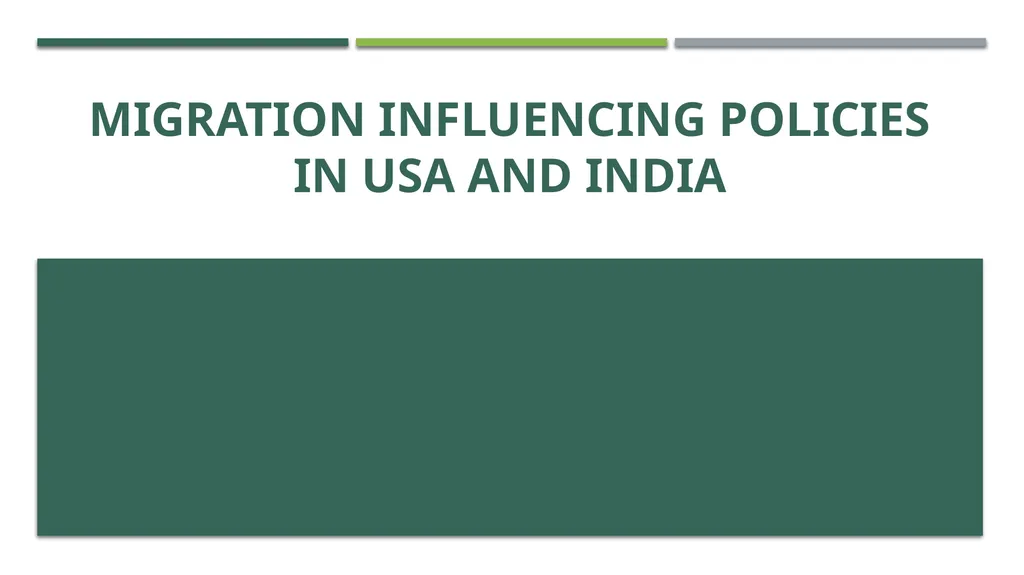Migration Influencing Policies in USA and India
Author : faustina-dinatale | Published Date : 2025-11-07
Description: Migration Influencing Policies in USA and India Introduction International migration is a global phenomenon that is growing in complexity scope and impact Today most countries are simultaneously countries of origin destination and
Presentation Embed Code
Download Presentation
Download
Presentation The PPT/PDF document
"Migration Influencing Policies in USA and India" is the property of its rightful owner.
Permission is granted to download and print the materials on this website for personal, non-commercial use only,
and to display it on your personal computer provided you do not modify the materials and that you retain all
copyright notices contained in the materials. By downloading content from our website, you accept the terms of
this agreement.
Transcript:Migration Influencing Policies in USA and India:
Migration Influencing Policies in USA and India Introduction International migration is a global phenomenon that is growing in complexity, scope and impact. Today, most countries are simultaneously countries of origin, destination and transit of migrants, so that countries in both less and more developed regions face various challenges and opportunities associated with migration. Migration policies play an important role in determining the flow, conditions and consequences of international migration. Trends in International Migration In 2013, the number of international migrants worldwide reached 232 million, up from 154 million in 1990. Currently, the global population of international migrants is growing at about 1.6 % per year (World population growth rate is 1.1 %) Major regions of the world account for different shares of the global stock of immigrants and emigrants. In 2013, Europe hosted 31 percent of the global migrant stock, whereas it was the origin of 25 percent of all emigrants (of whom 65 percent were living within Europe). In comparison, Asia and Northern America hosted 31 and 23 percent of the global migrant stock respectively, while they were the origin of 40 and 2 percent of all emigrants. *(The number of international migrants is defined as the mid-year (1st July) estimate of the number of people residing in a country other than that in which they were born) *(An international migrant is defined as “any person who changes his or her country of usual residence” (UNDESA); International Stocks are defined as “the total number of international migrants present in a given country at particular point in time (UNSD, 2017) Migration Policies (USA) About 20 percent (45.8 million *Total International Migrant Stock – 232 million, 2013*) of all international migrants reside in the United States, which as a country accounts for less than 5 percent of the world’s population. This fact makes it ample clear that it is the largest magnet of international immigrants helped by some migration policies. Immigration policies generally respond to labour market needs and demographic objectives and destination countries. Historically, in America the immigration policies were influenced by both but recently it is influenced more by the needs of the labour market requirements. Immigration has shaped the United States as a nation. Lawful immigration has been a major source of population growth and cultural change throughout much of the US history because the United States is a settler colonial society, all Americans, with the exception of













